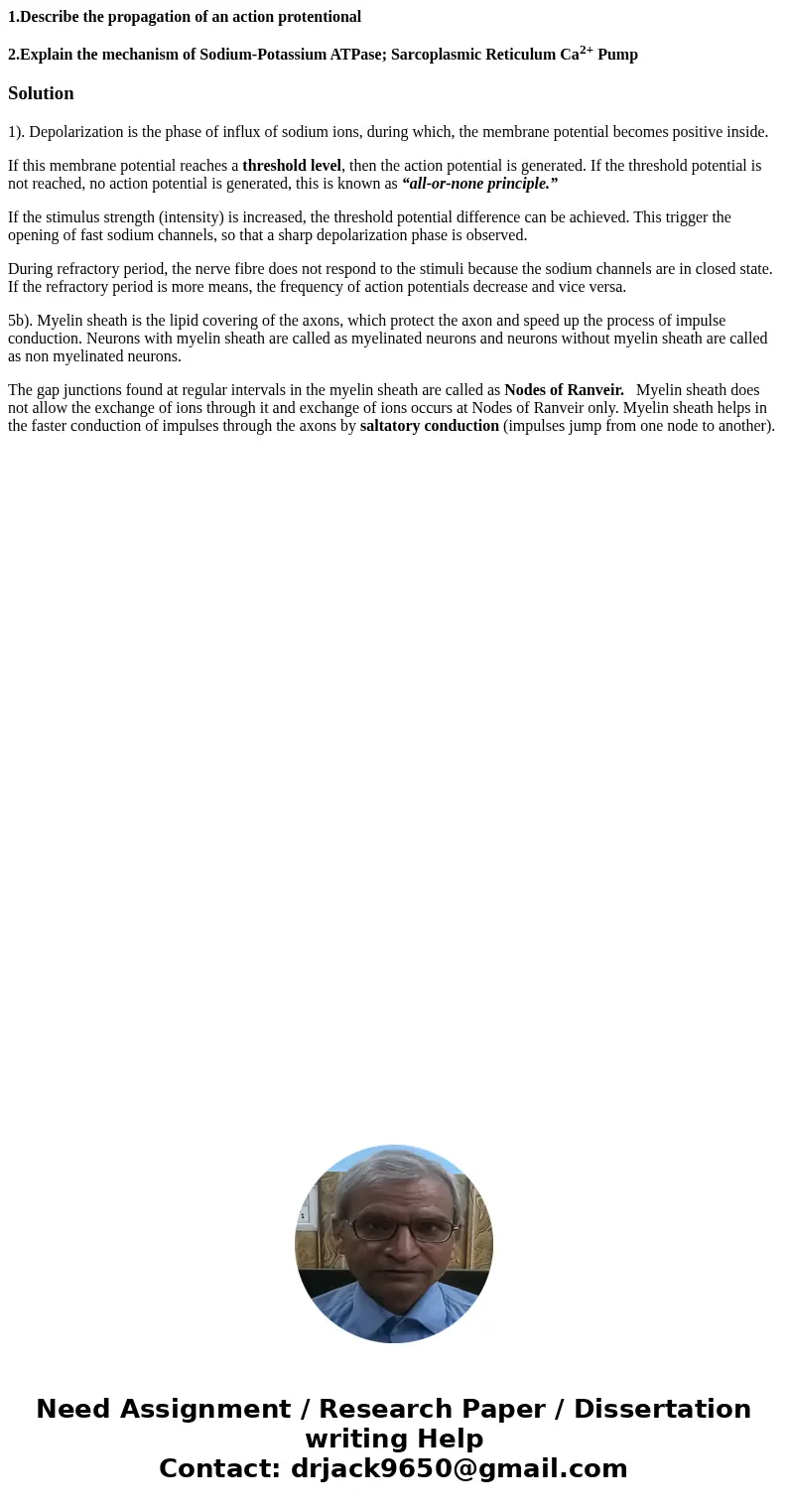1Describe the propagation of an action protentional 2Explain
1.Describe the propagation of an action protentional
2.Explain the mechanism of Sodium-Potassium ATPase; Sarcoplasmic Reticulum Ca2+ Pump
Solution
1). Depolarization is the phase of influx of sodium ions, during which, the membrane potential becomes positive inside.
If this membrane potential reaches a threshold level, then the action potential is generated. If the threshold potential is not reached, no action potential is generated, this is known as “all-or-none principle.”
If the stimulus strength (intensity) is increased, the threshold potential difference can be achieved. This trigger the opening of fast sodium channels, so that a sharp depolarization phase is observed.
During refractory period, the nerve fibre does not respond to the stimuli because the sodium channels are in closed state. If the refractory period is more means, the frequency of action potentials decrease and vice versa.
5b). Myelin sheath is the lipid covering of the axons, which protect the axon and speed up the process of impulse conduction. Neurons with myelin sheath are called as myelinated neurons and neurons without myelin sheath are called as non myelinated neurons.
The gap junctions found at regular intervals in the myelin sheath are called as Nodes of Ranveir. Myelin sheath does not allow the exchange of ions through it and exchange of ions occurs at Nodes of Ranveir only. Myelin sheath helps in the faster conduction of impulses through the axons by saltatory conduction (impulses jump from one node to another).

 Homework Sourse
Homework Sourse